Stonehenge
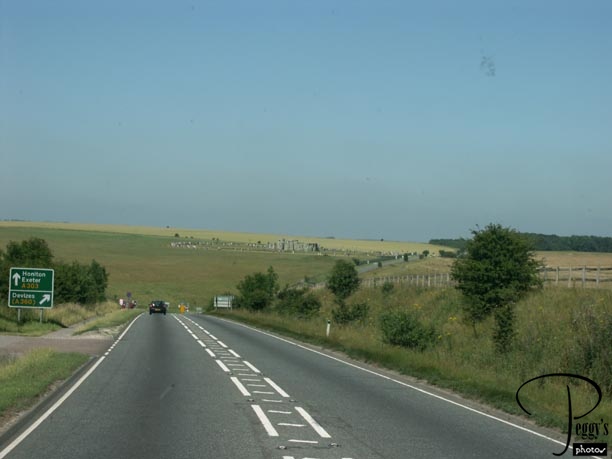
Today, I took Grayline’s tour no. 8: Bath, Stonehenge, and Salisbury. All these places are southeast of London. Grayline again picked me up from my hotel. Our tour guide was named Priscilla, and if you ever have Priscilla for one of your tours, you will remember her. I think she was about 70 years old, and with her captive tour bus audience, she recited, and often, her complaints with this world: everything from the usual (war in Iraq, high cost of prescription medicine) to her two main gripes: people who drive their cars into London, thereby causing traffic jams going in and out of London, and people who drink bottled water. She showed us her bottle of water and told us that she fills it only with tap water. According to Priscilla, you should send all the money that you save by not buying bottled water to Africa to feed the children there (she didn’t exactly say that she did this; obviously, Priscilla didn’t bring along any cold bottles of water that we could buy and it was even hotter today than it was yesterday). But she really was a very nice person and a good tour guide, but I felt sorry for her thinking about how depressed she must be upon waking up each day. To the photo: Stonehenge from a distance.

Stonehenge
Stonehenge
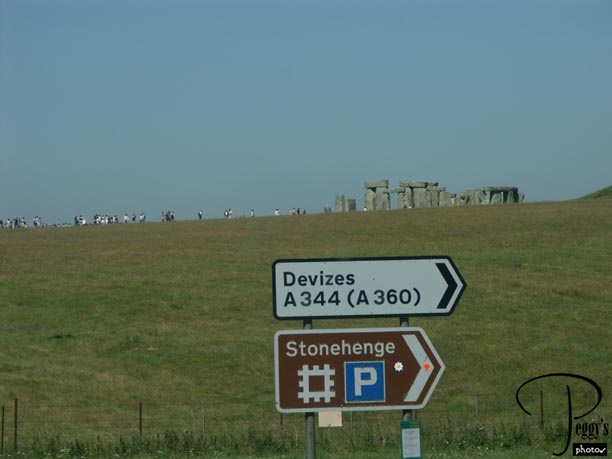
I was very thrilled to see Stonehenge as I have heard and read so much about it. And here it was––definitely much smaller in area than I thought it would be. Visitors here walk around in a circle; hence, you get to take photos of different views of it. This is a closer–up photo.

Stonehenge
Stonehenge
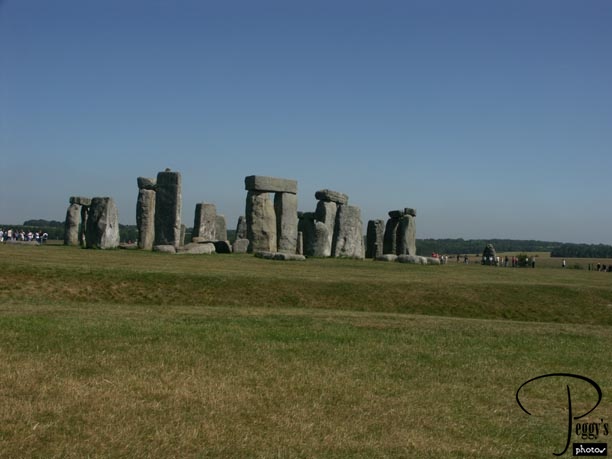
Still closer–up. Stonehenge was built between 3000 and 1000 B.C. The stones to build it were from either Wales or Scotland, as the type of stone used––blue stones––are found only in these countries. It is not known why local stones weren’t used.

Stonehenge
Stonehenge
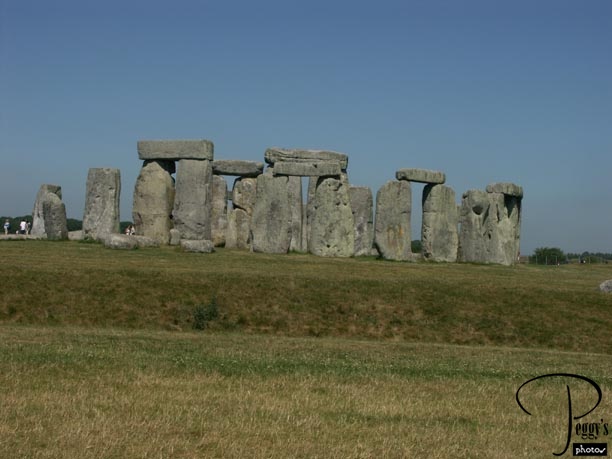
The stone circle at Stonehenge and also the other more than 300 stone circles in England were used to determine the movement of the sun, moon, and stars and the seasons so that the people could know when to plant and harvest their crops.

Stonehenge
Stonehenge
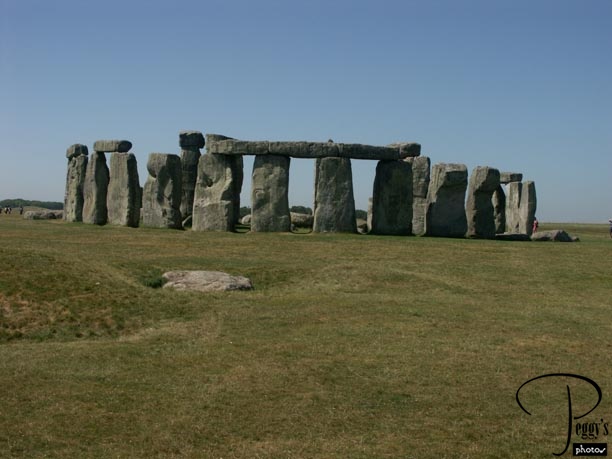
Photo taken at a different place on the circle.

Stonehenge
Stonehenge
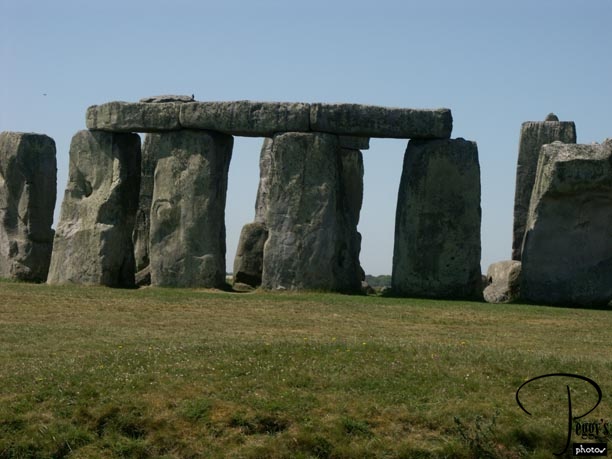
Close–up of the stones.

Stonehenge
Stonehenge

Another close–up.

Stonehenge
Stonehenge
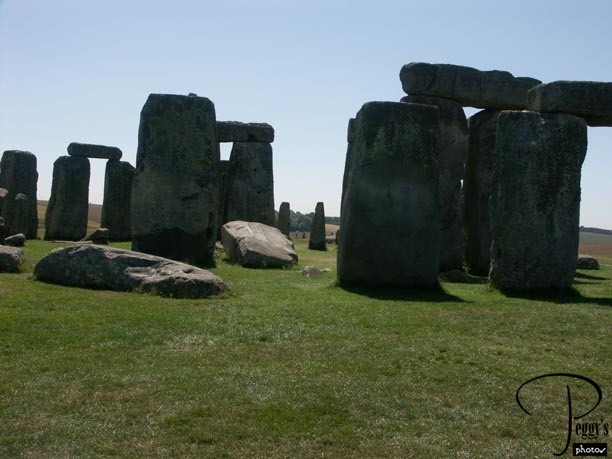
Some tours let you enter the actual circle of stones. Ours didn’t, so I took these close–up photos with my zoom lens.

Stonehenge
Stonehenge
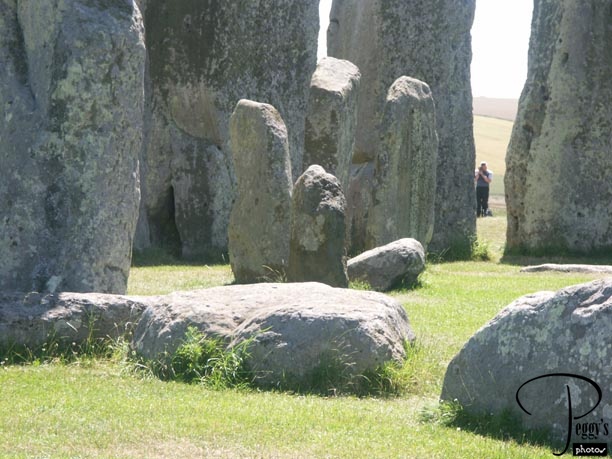
Another close up.

Stonehenge
Stonehenge
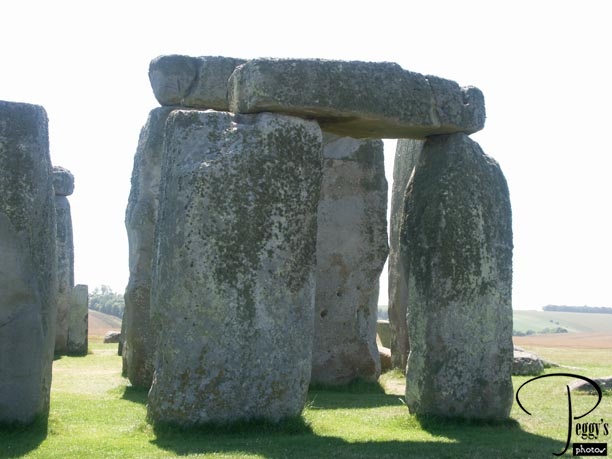
Another close–up of the stones.

Stonehenge
Stonehenge
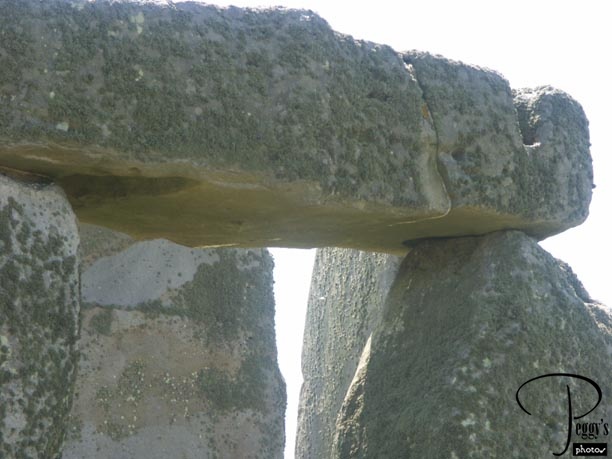
And a very close–up.

Stonehenge
Stonehenge
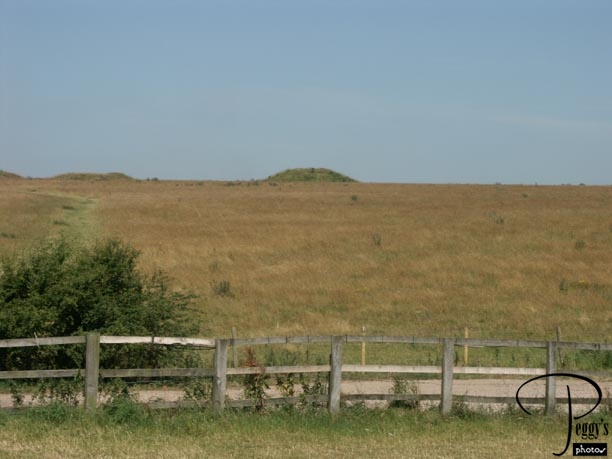
This photo is of some of the many burial mounds near Stonehenge. I read recently that excavation of some of them has been undertaken.

Stonehenge
Salisbury

From Stonehenge, we drove to Salisbury to see its cathedral. This photo is of a square in Salisbury that I took from the bus.

Salisbury
Salisbury
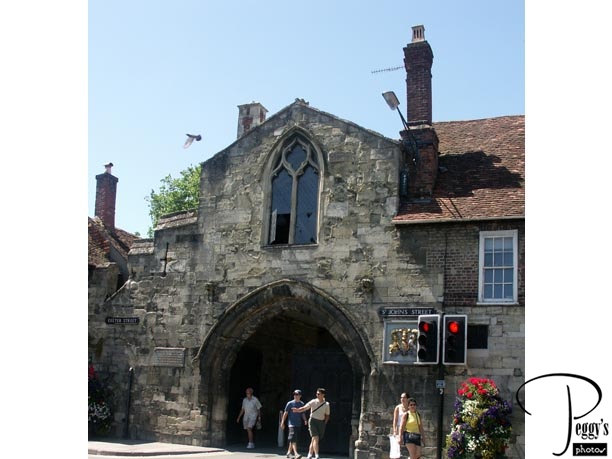
You enter the area where the cathedral is through this gate: High Street Gate.

Salisbury
Salisbury
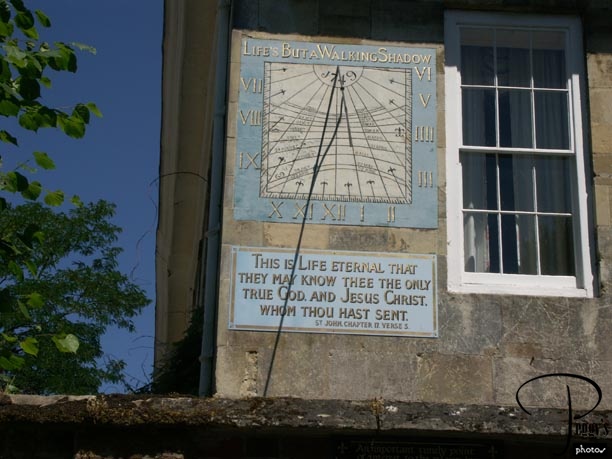
This clock was on the wall of a building right past the gate. On its top, it says: Life’s But a Walking Shadow. Besides from the time, the clock also tells you the month and the day. However, this clock is from 1749 and uses the Julian Calendar. England adopted the Gregorian Calendar on September 2, 1752. The Julian Calendar had an error of 11 days, so the next day after September 2 became September 14. I don’t know how many days that the clock in the photo is now off.

Salisbury
Salisbury
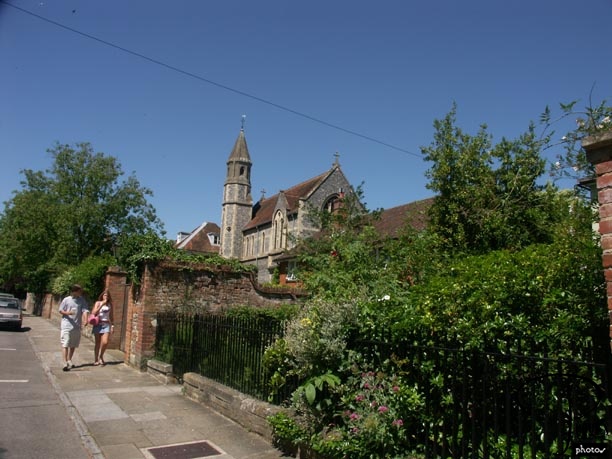
After entering the gate, you are on High Street. Here you can see the Church of St. Thomas, built in the 13th century. We did not visit it.

Salisbury
Salisbury
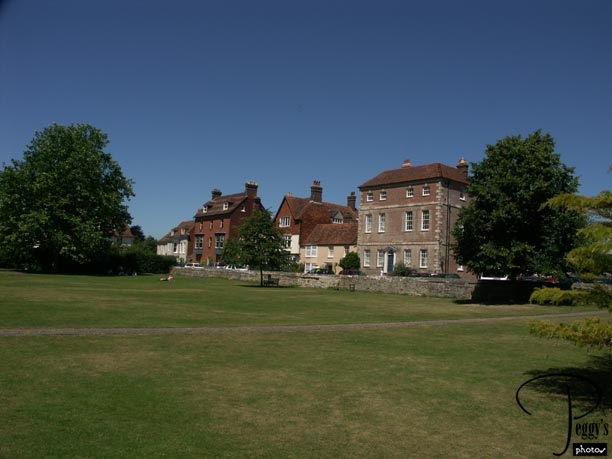
Some houses along High Street.

Salisbury
Salisbury
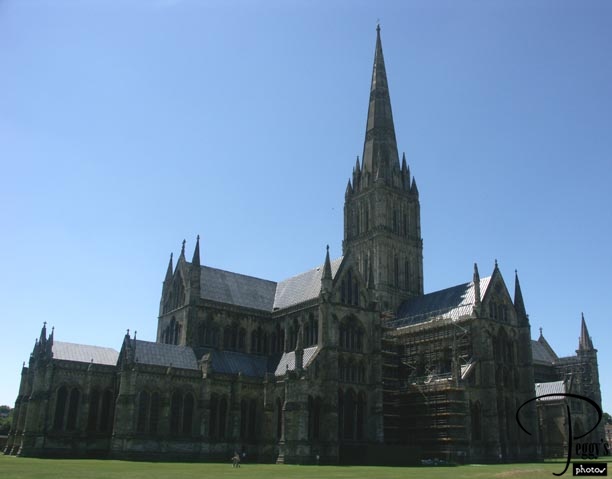
The Salisbury Cathedral (with some scaffolding slightly ruining its appearance). The cathedral was built between 1220 and 1258 in the Early English Gothic style. It’s denomination is Church of England.

Salisbury
Salisbury
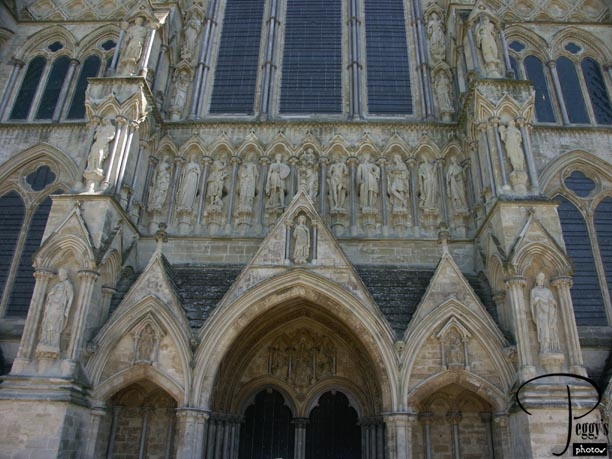
Close–up of the outside of the cathedral.

Salisbury
Salisbury
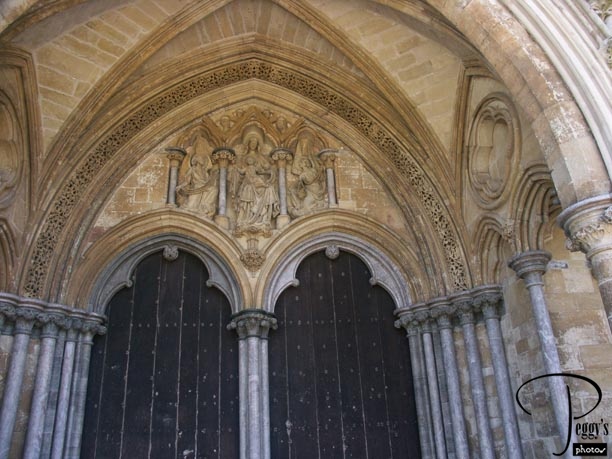
Another close–up of the outside of the cathedral.

Salisbury
Salisbury
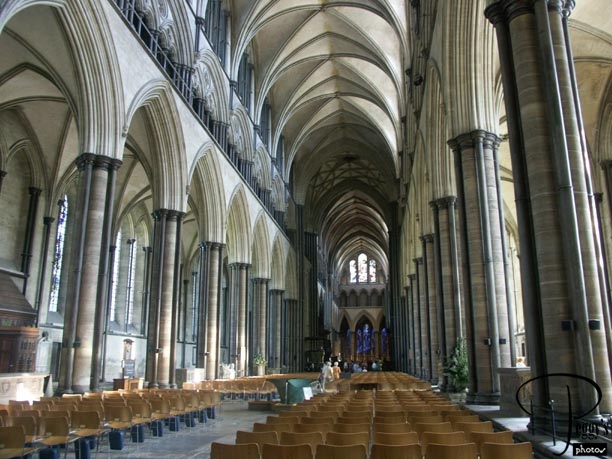
Inside the cathedral.

Salisbury
Salisbury
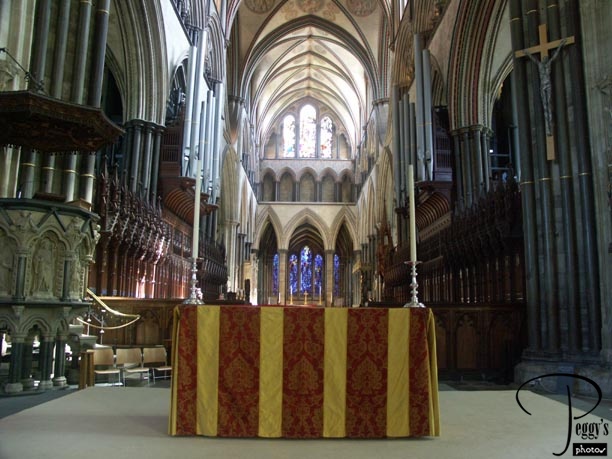
Close–up of the altar.

Salisbury
Salisbury
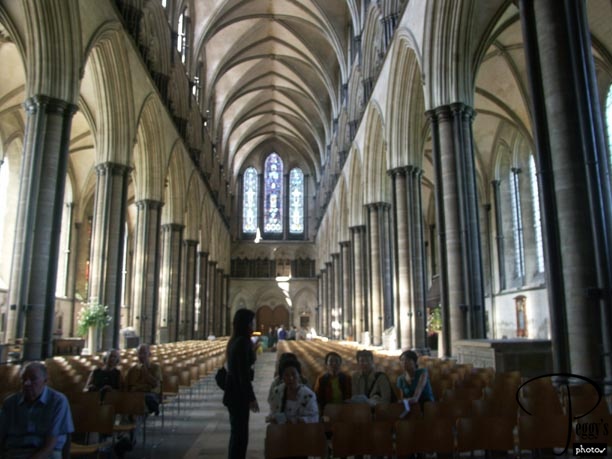
Looking toward the entrance.

Salisbury
Salisbury
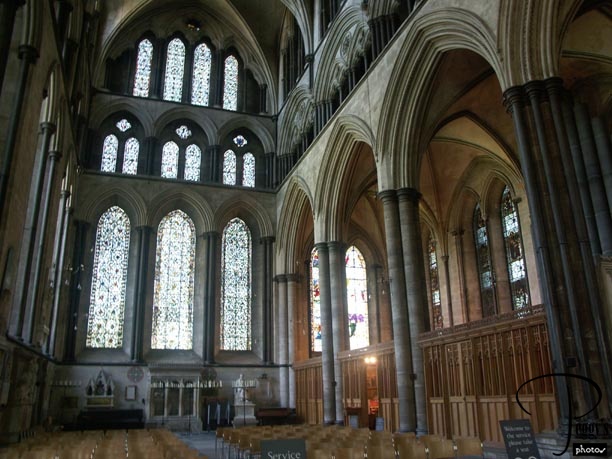
Inside the cathedral.

Salisbury
Salisbury
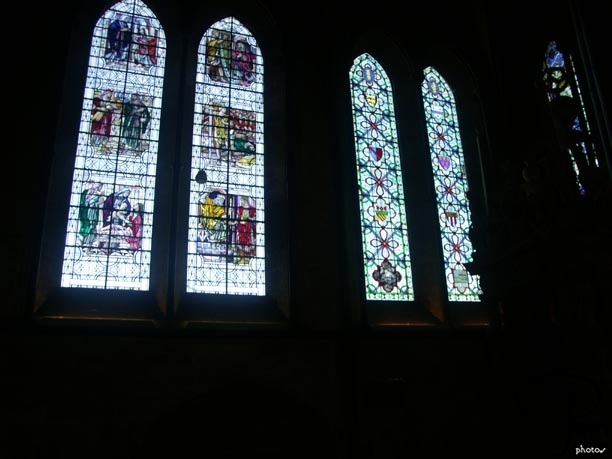
Stained–glass windows.

Salisbury
Salisbury
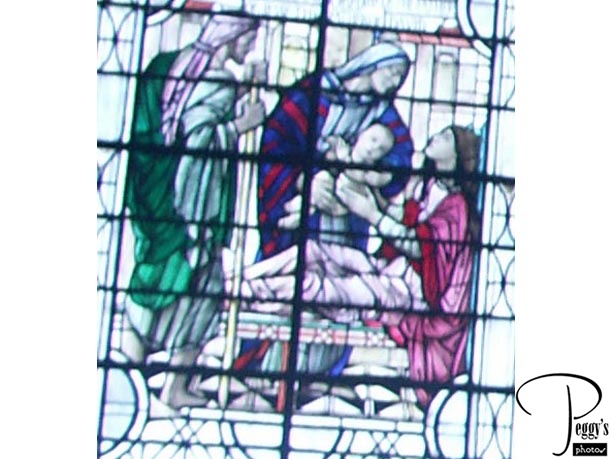
Close–up of one of panes in the stained–glass window.

Salisbury
Salisbury

Memorial to William Longespee the Younger. The inscription: “Son of William, Earl of Salisbury, he led the English Knights in the Seventh Crusade and died heroically in the assault on Mansoura, Egypt, in 1250. He was buried in Acre.”

Salisbury
Salisbury
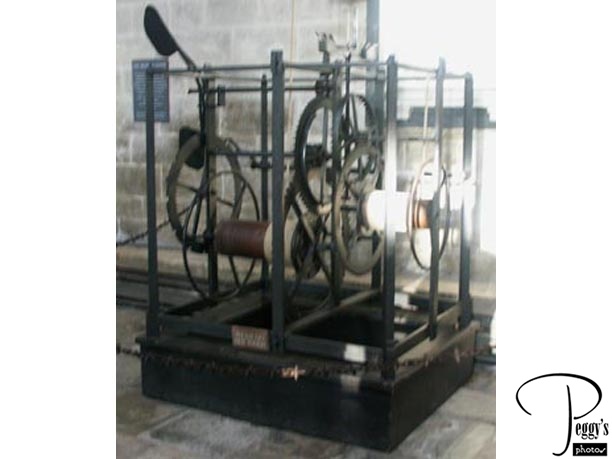
This clock inside the cathedral is from 1386 and is the oldest working clock in Europe.

Salisbury
Salisbury
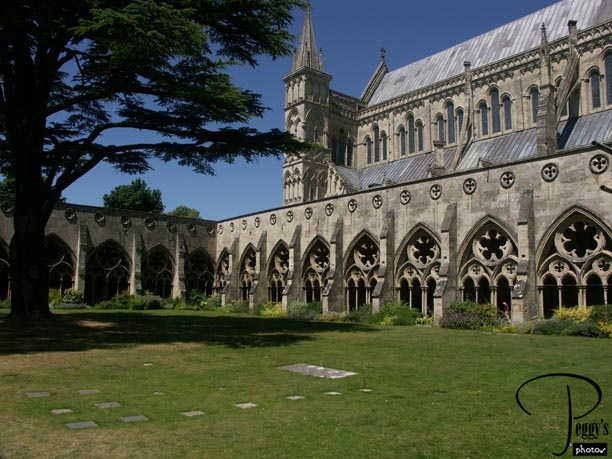
View of the Cloisters.

Salisbury
Salisbury
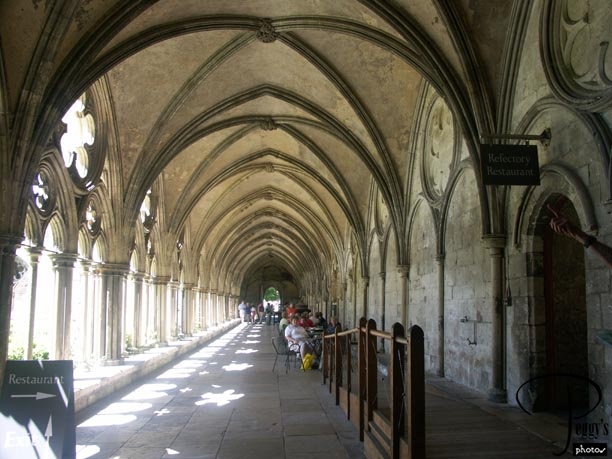
The cathedral’s restaurant.

Salisbury
Salisbury
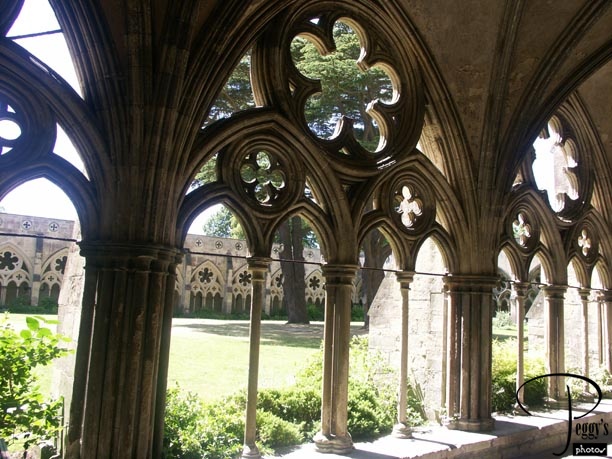
View of the Cloisters from the restaurant.

Salisbury
English Farmhouse
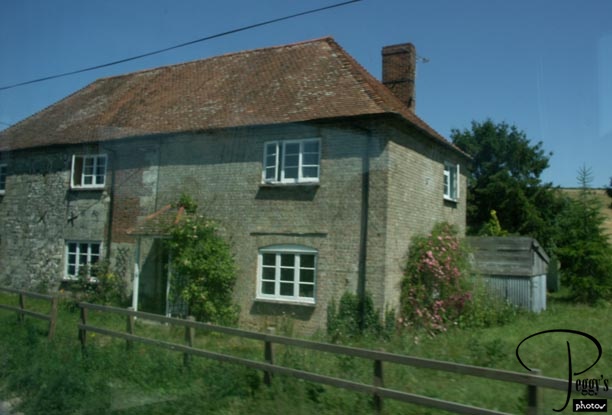
After visiting the cathedral, we ate lunch at a real pub, but it was so upscale that it just felt like you were in a regular restaurant. I had salmon––very good. Then, we were on our way to Bath. I took this photo of an English farmhouse from the bus.

English Farmhouse
Thatched Roof
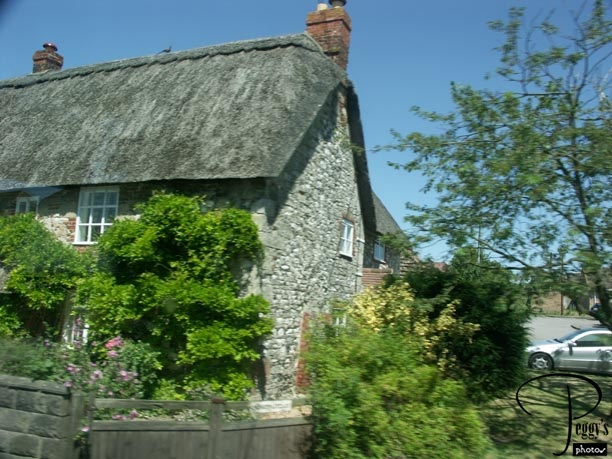
I also took this photo of a thatched roof from the bus. I had expected to see many thatched roofs while I was in England but I was told that they are now out of favor as they attract rats and also because there is a higher property tax to be paid for thatched roofs.

Thatched Roof
Bath
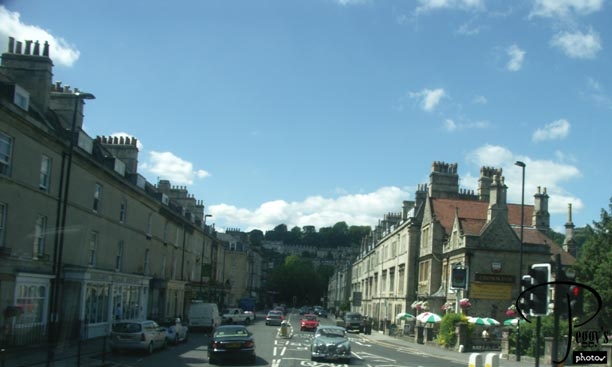
Entering the center of the city of Bath.

Bath
Bath
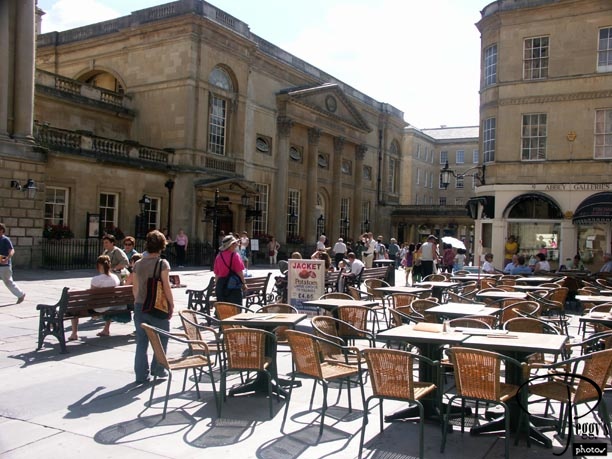
We first visited the Roman Baths, the best–preserved Roman spa from the ancient world. They are housed in the building on the left of the photo.

Bath
Bath
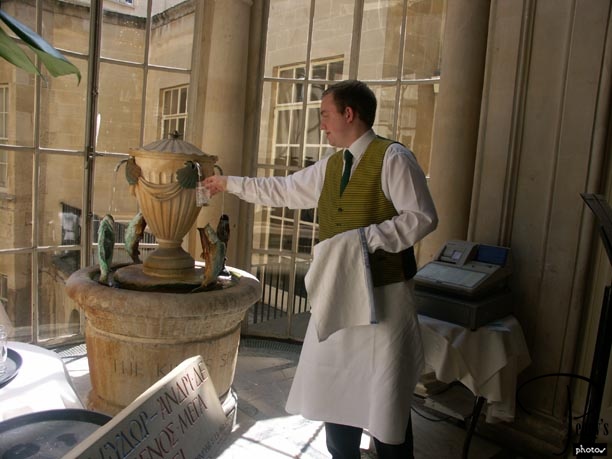
Before viewing the Roman Baths, we were offered a drink of warm Bath spa water, served to us by an official “Pumper,” the man in the photo. The spa water contains 43 minerals which give it an unusual taste. I didn’t find the taste too bad and drank a full glass of it. Other people thought it tasted somewhat foul.

Bath
Roman Baths
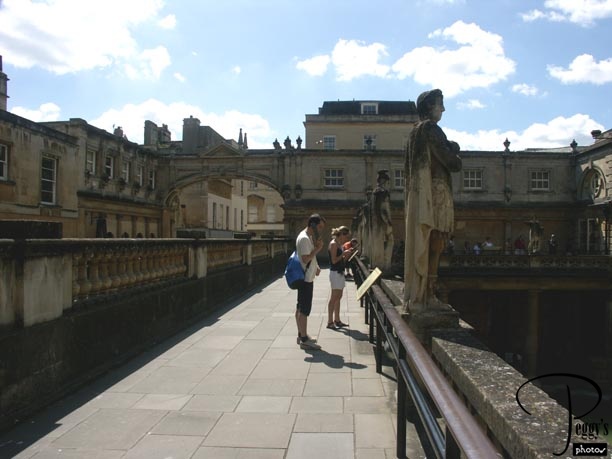
Walkway to view the Baths.

Roman Baths
Roman Baths
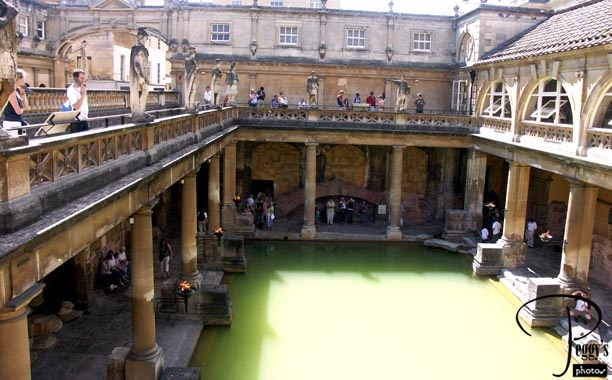
View of the Roman Baths from the walkway above them.

Roman Baths
Roman Baths

Another view.

Roman Baths
Roman Baths
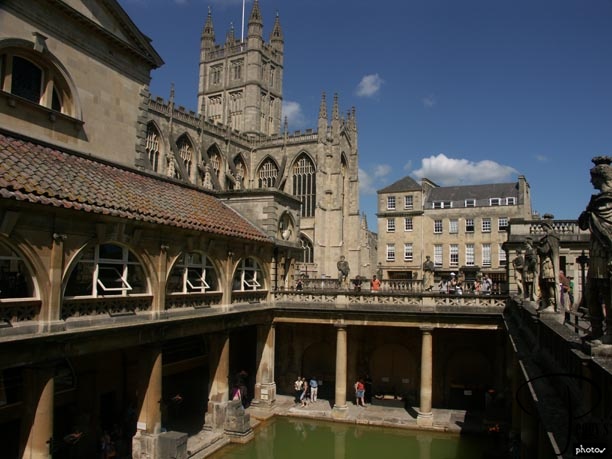
View of Bath Abbey from the Roman Baths.

Roman Baths
Roman Baths
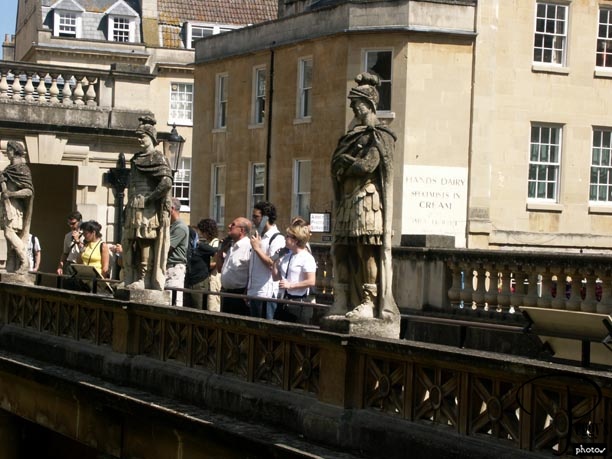
Roman soldiers keeping all the tourists in line.

Roman Baths
Bath
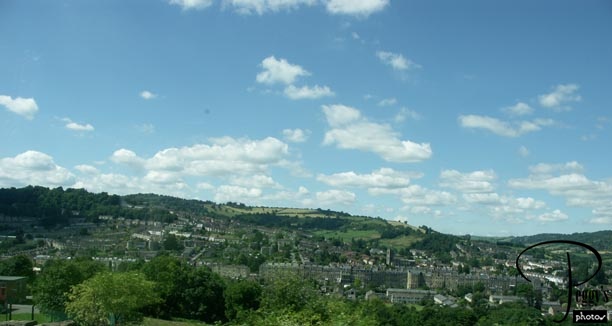
Approaching the city of Bath. Bath is located in the hills of the Avon Valley and there are spendid views of the hills from many viewpoints. Photo taken from the bus.

Bath
Roman Baths
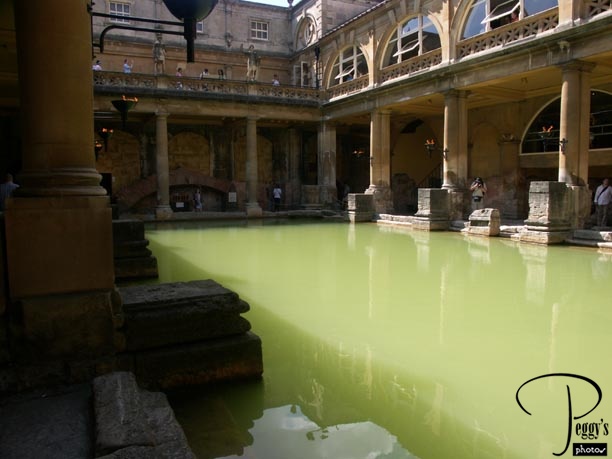
View from the bottom level.

Roman Baths
Roman Baths
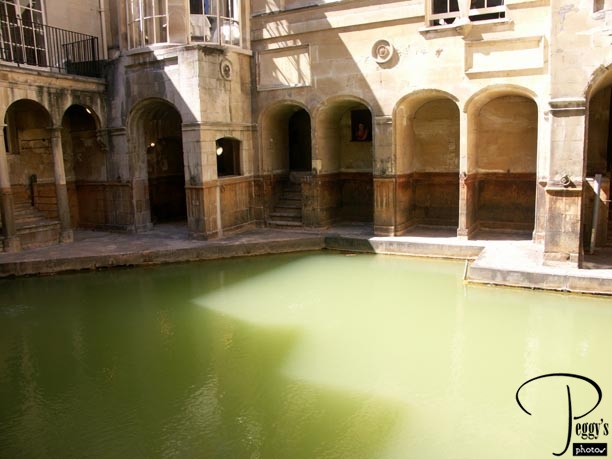
Another view from the bottom level.

Roman Baths
Roman Baths
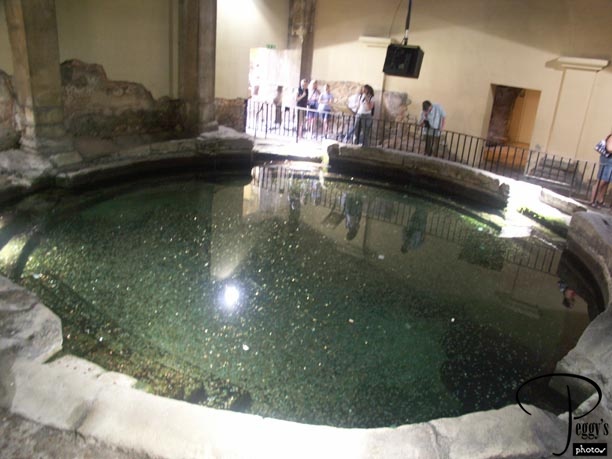
Another one of the baths. The sparkles that you see in the water are coins that people threw in (I don’t know why). There were also several U.S. dollar bills floating around.

Roman Baths
Bath
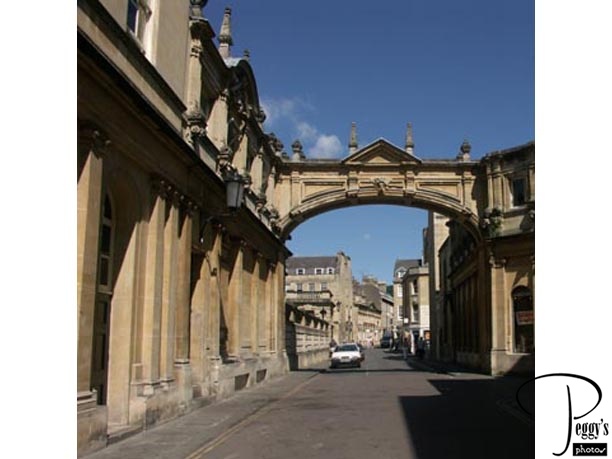
View of the city of Bath. Its buildings date from the 1800s and are made from a limestone called Bath limestone.

Bath
Bath
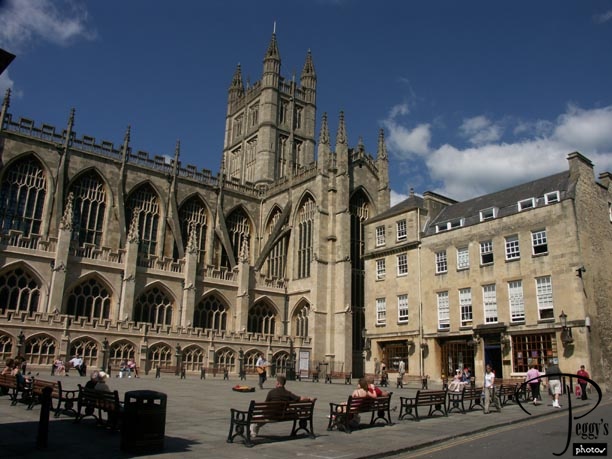
The square in front of Bath Abbey. The Roman Baths are also off this square. Bath Abbey dates back to 1499.

Bath
Bath
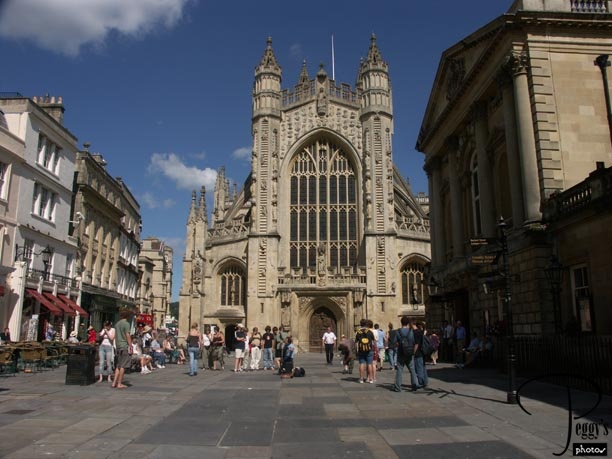
The square in front of Bath Abbey. The Roman Baths are also off this square. Bath Abbey dates back to 1499.

Bath
Bath Abbey

Inside the abbey.

Bath Abbey
Bath Abbey
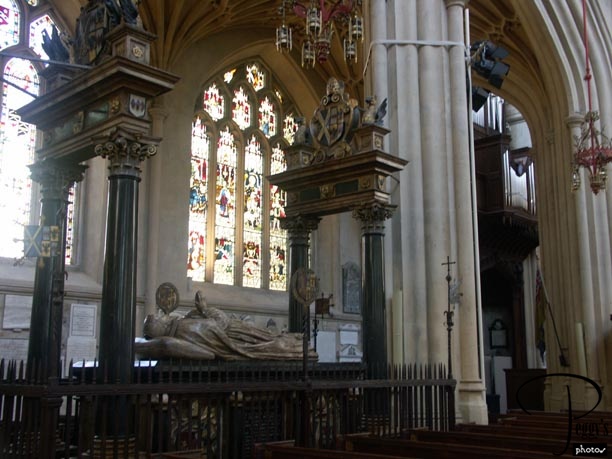
Another view of inside the abbey.

Bath Abbey
Bath
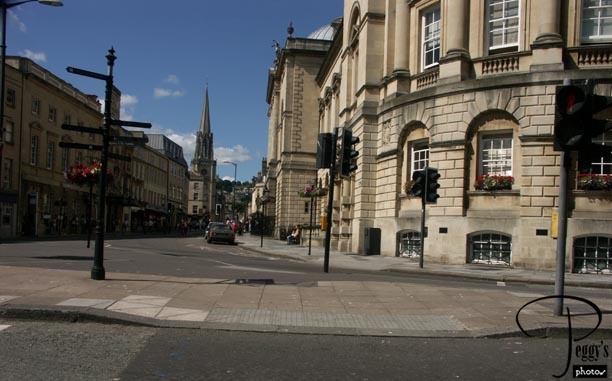
Old buildings in Bath.

Bath
Bath
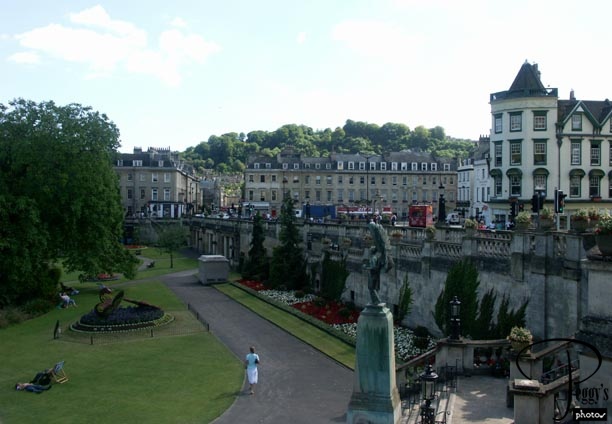
View of the city from an overlook over the River Avon.

Bath
Bath
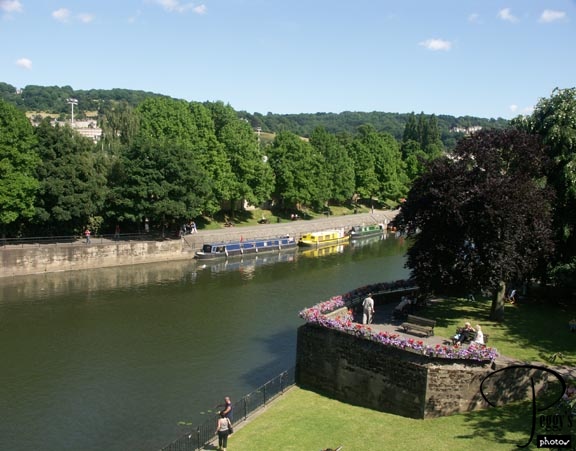
You can take a boat cruise on the river.

Bath
Bath
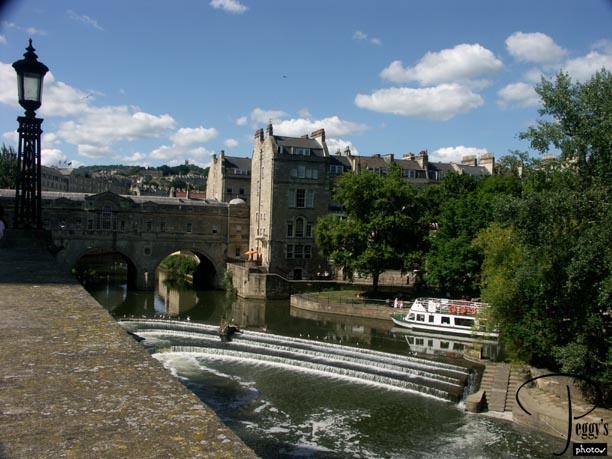
View of the Pulteney Bridge. This bridge from the 1700s is lined with shops.

Bath
Bath
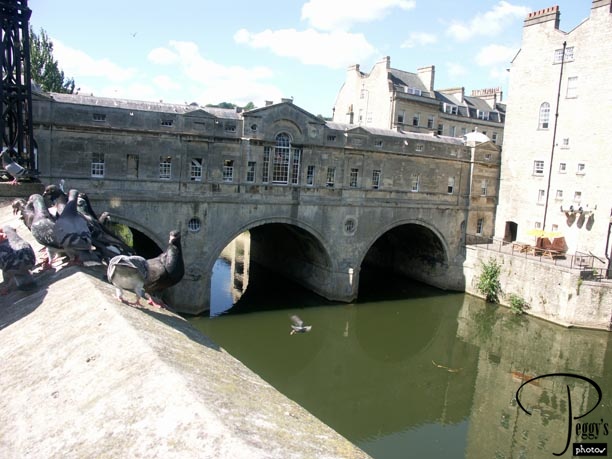
Closer–up view of Pulteney Bridge over the River Avon.

Bath
On the Road
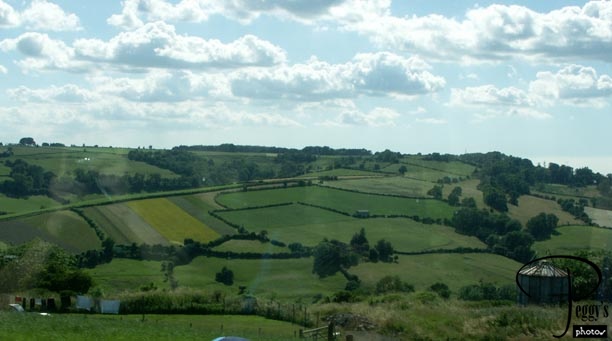
We definitely didn’t spend enough time in Bath. Many people spend several days here. There are tours from Bath to the Cotswolds and to other cities. This photo shows some of the beautiful English countryside that we passed on our way back to London. Since we were almost passing my hotel on our way back to the city, Priscilla decided I should get off the bus about a 1/4 mile from my hotel and walk the rest of the way back. She suggested that I stop at the Tesco supermarket on the corner and pick up something for my dinner. This I did, but at 6:30 p.m. most of the deli items were gone. I bought a delicious piece of chicken but had to stop at a convenience store to pick up some crisps (in England, potato chips are crisps and chips are French fries) as Tesco had every kind of crisps imaginable except for plain, which I wanted. I ate my purchases in my hotel room.
